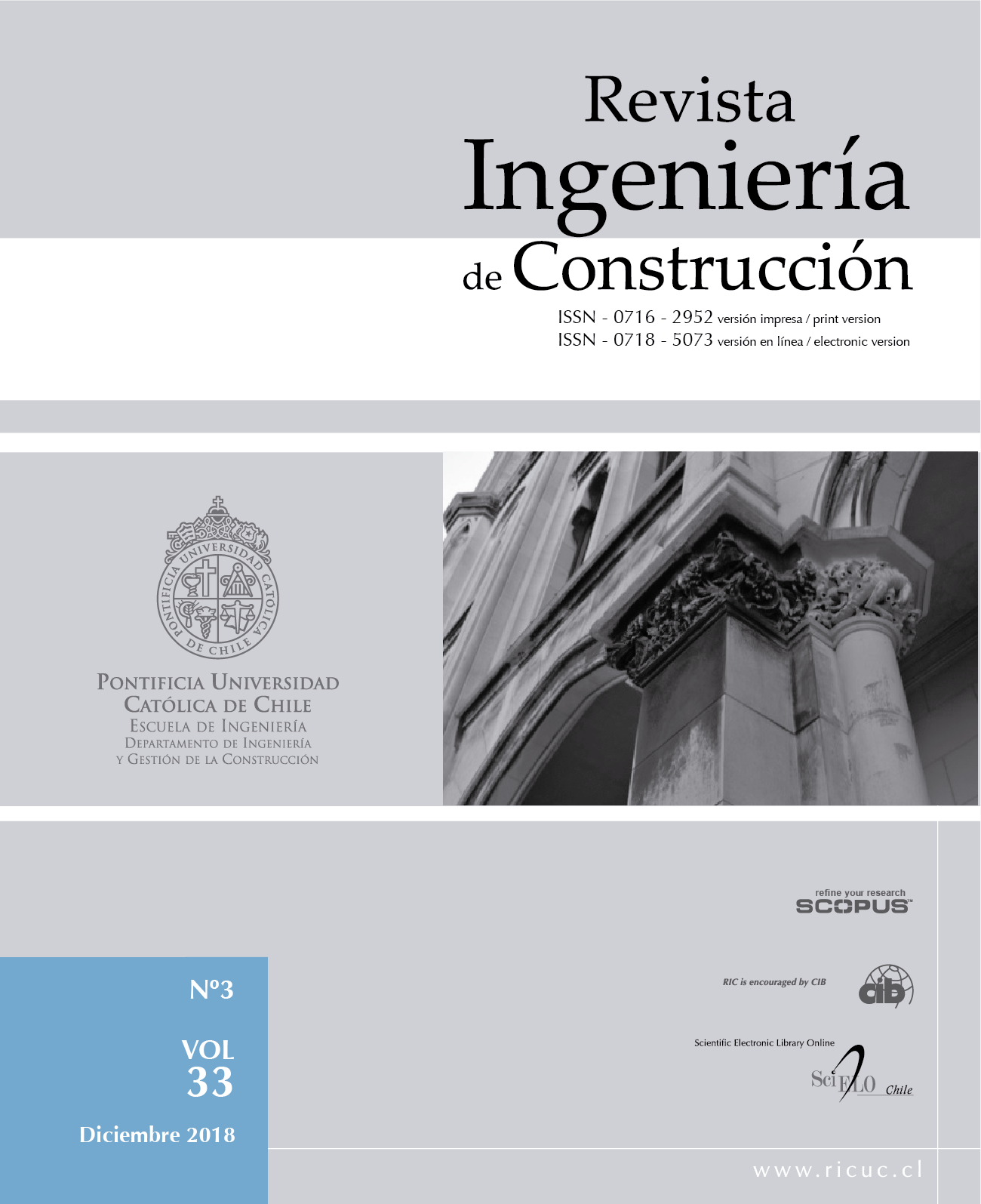Physical and Mechanical Properties of Concrete Using Residual Powder from Organic Waste as Partial Cement Replacement
DOI:
https://doi.org/10.4067/10.4067/S0718-50732018000300229Keywords:
Residual powder, organic waste, concrete, mechanical propertiesAbstract
The continued growth in demand for cement has raised concerns in the industry about environmental and sustainability issues. In addition, the worldwide generation of large quantities of solid waste threatens human health and on environmental quality. This paper proposes to assess the feasibility of using a residual powder derived from organic waste of vegetable or animal origin for replacing part of Portland cement during concrete production. Specifically, the powder is derived from a living being such as the remains of food (meat, vegetables, fruits and eggshells), paper, wood, bones and seeds. Its scientific contribution is a conscious change due to development of an alternative material to contribute with more sustainable processes in the construction industry. Three types of mixtures for cement content were studied: aggregate/cement (A/C) ratios of 15, 10 and 6. Concrete samples were then made by replacing the cement with organic waste powder in percentages of 5%, 10%, 15%, and 20%. These mixtures were evaluated for their physical and mechanical properties. The results showed that the reference concrete had higher compressive strength than the concrete with low cement content (A/C ratio of 15:1). However, samples made with 5% of powder and an A/C ratio of 10:1 presented values at least 2.1% greater than compressive strength of the reference concrete. Mixtures rich in cement (A/C ratio of 6:1) and the powder replacements of up to 10% showed in the best mechanical behavior in 13% in relation to the reference concrete. Therefore, waste powder can be used as filling material to replace part of the cement, resulting in denser and more resistant concrete, as well as less specific absorption and voids.


